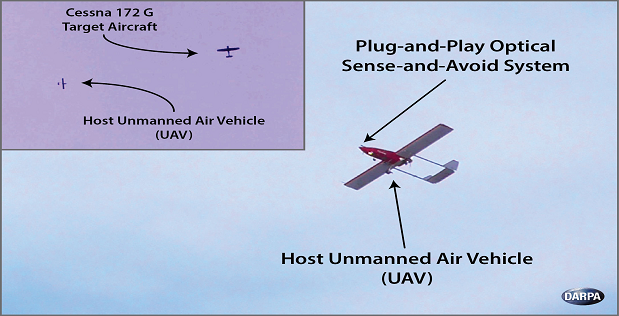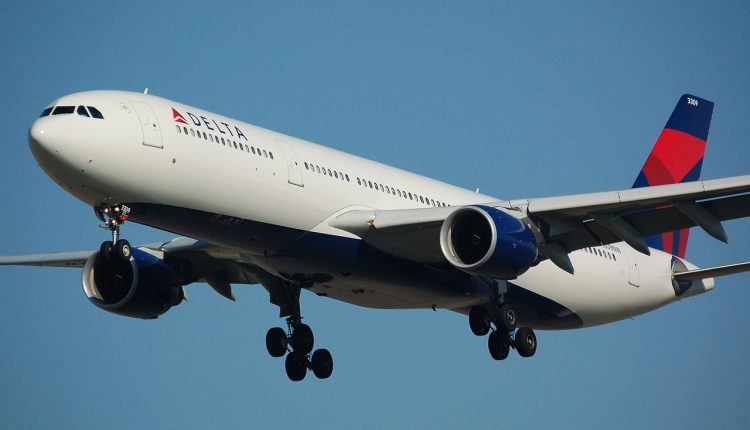There’s a new plug-and-play system that’s designed to keep both manned and unmanned aircraft safe from potential mid-air collisions.
The system, designed by researchers with DARPA’s Aircrew Labor In-Cockpit Automation System (ALIAS) program, was successfully tested by an unmanned air vehicle (UAV) that demonstrated how the technology can be used to detect and track in real time a Cessna 172G aircraft that was approaching from different vertical and horizontal distances.
The sense-and-avoid (SAA) system includes an optical camera that provides images for detection and tracking and incorporates passive ranging features that determine the likelihood of an incoming aircraft intersecting the flight path of its host aircraft. Its collision-avoidance capabilities then figure out the best way to steer the host aircraft out of the way.

This technology is part of DARPA’s work toward creating a low-cost, easy to install system to detect oncoming or crossing aircraft and determine the best avoidance strategy compliant with standard rules that set minimum vertical and lateral distances between aircraft during flight.
“This successful flight test is a step toward adding external perception to ALIAS’ toolkit for advancing in-flight automation,” said Dan Patt, Program Manager in DARPA’s Tactical Technology Office. “What pilot wouldn’t want to set a box on their dashboard that would provide an additional pair of eyes to alert of potential collisions? This SAA system has the potential to enable a wide range of manned and unmanned systems to safely integrate into an increasingly populated and complex airspace.”
DARPA has been working on this capability for the past two years and since its successful demonstrations is planning another phase of development, which will shrink the size of the system and extend the collision-avoidance features. DARPA also hopes to improve system calculations and capabilities.
This new detection system could help defense organizations, as well as unmanned air systems with fewer crew members. Once complete, DARPA hopes the system will serves as a drop-in, removable kid that will boost automation capabilities in existing aircraft and reduce the need for on-board crew members.


Comments are closed, but trackbacks and pingbacks are open.